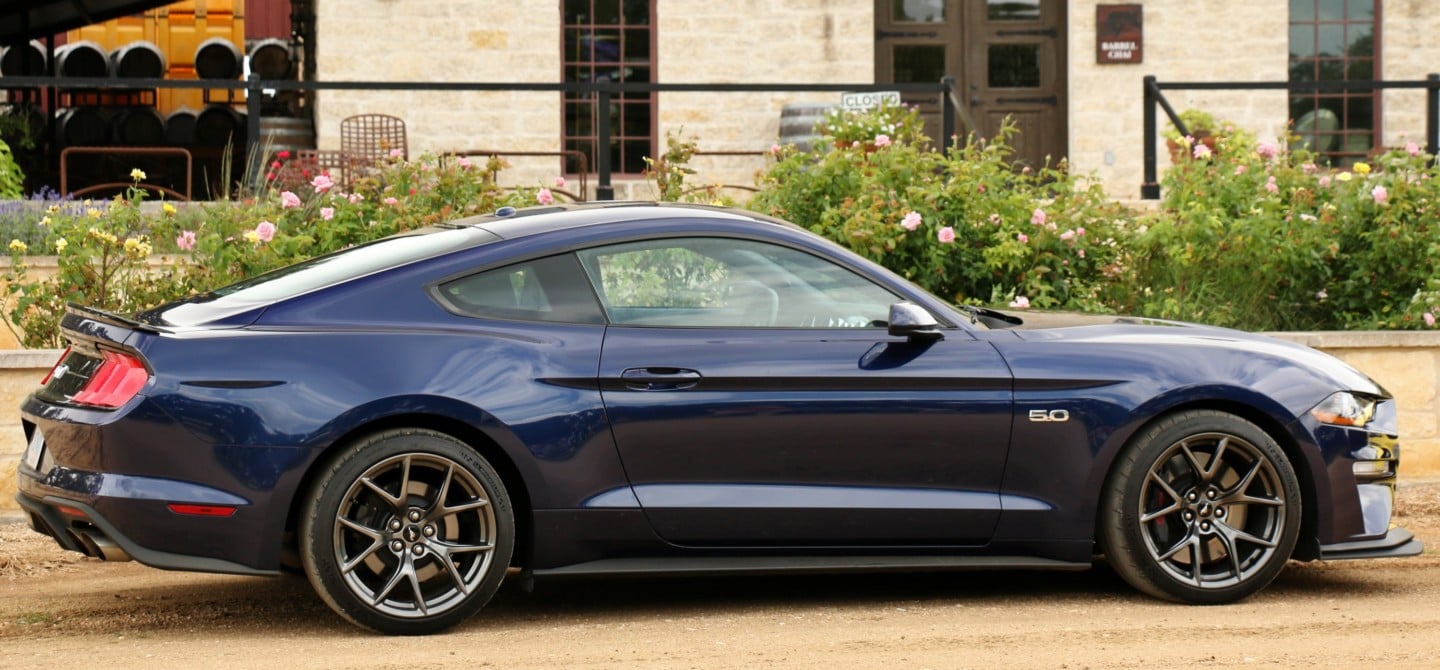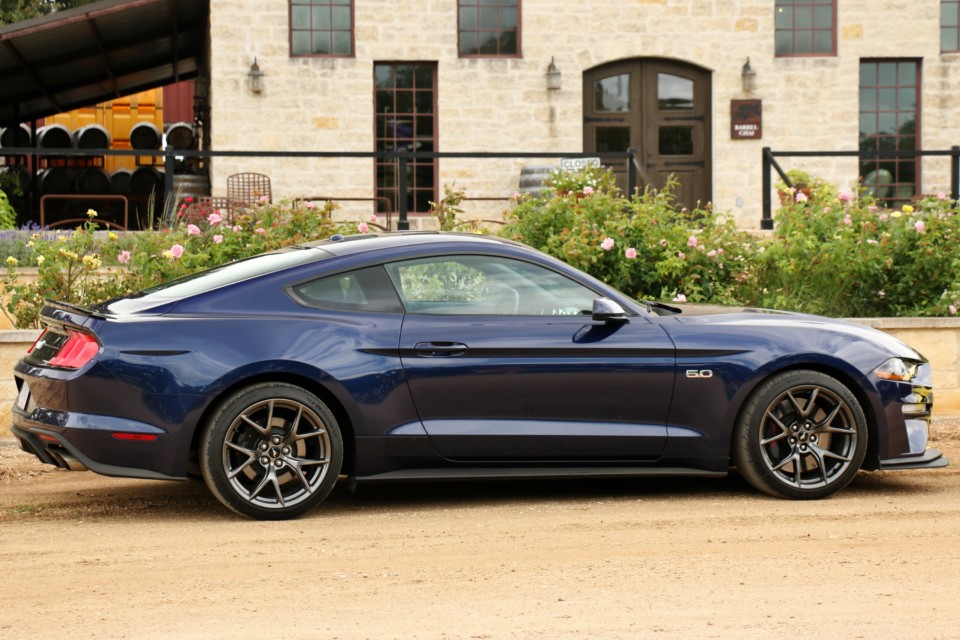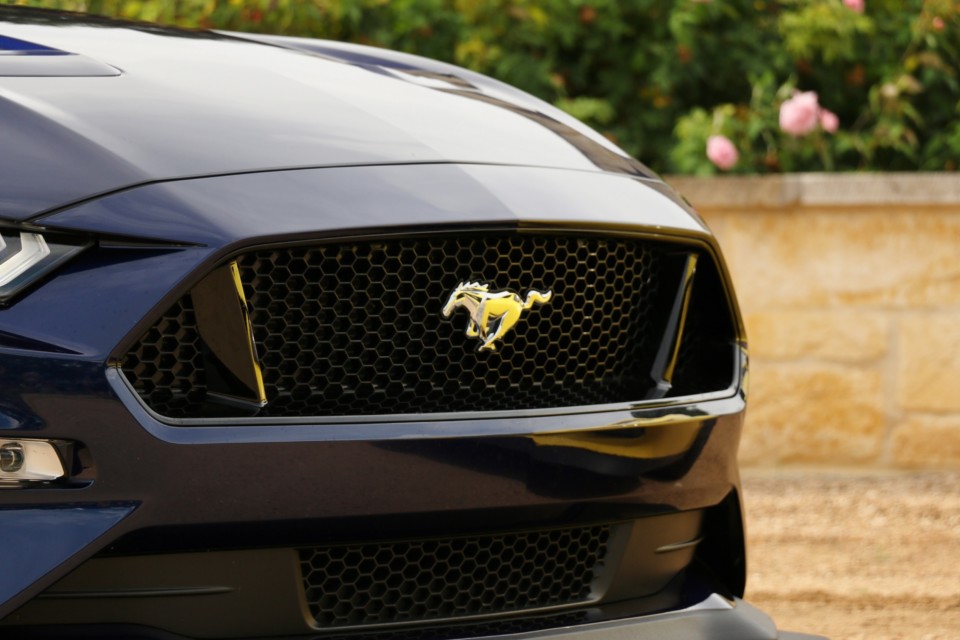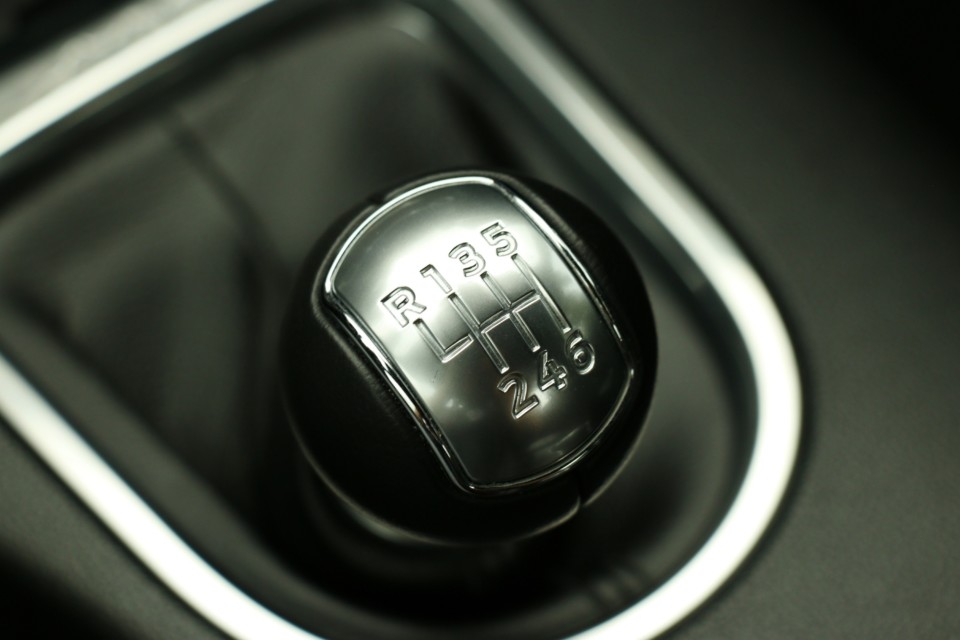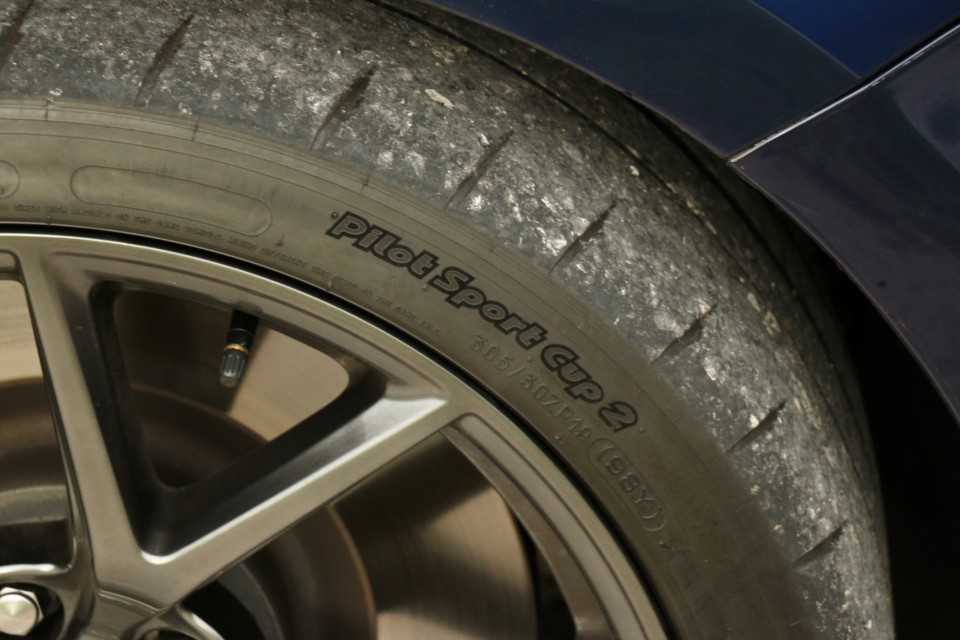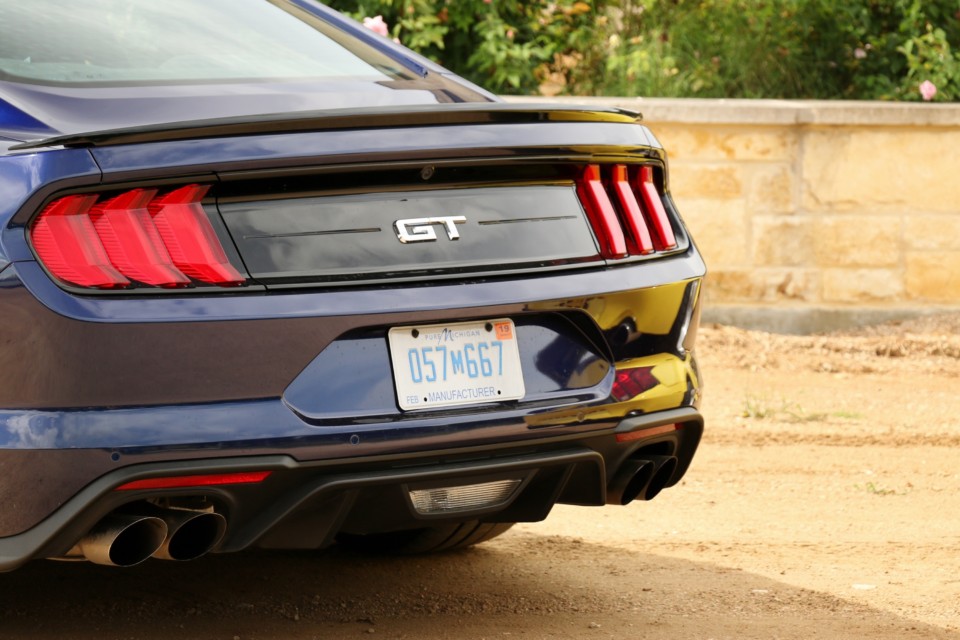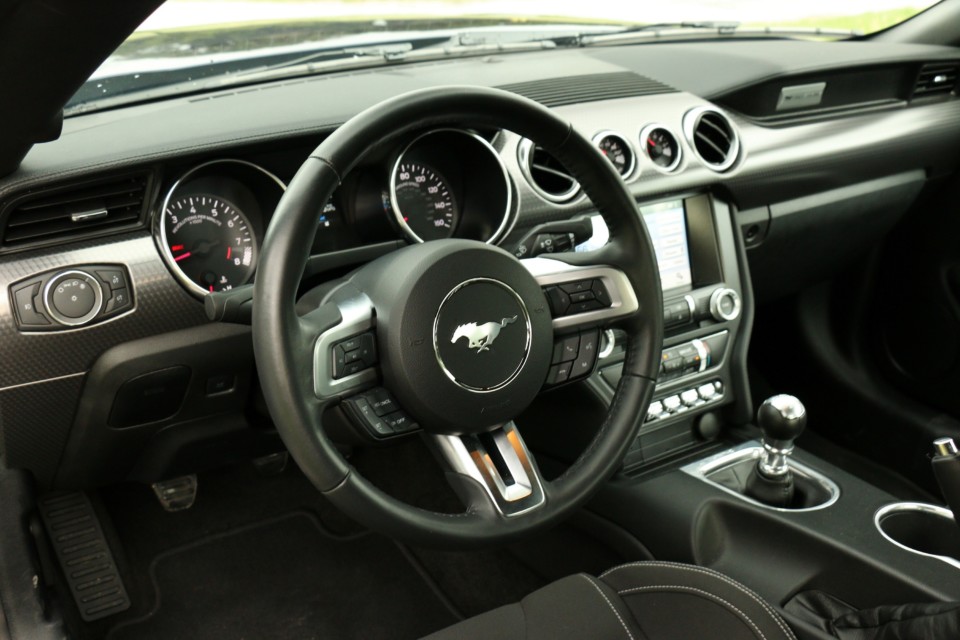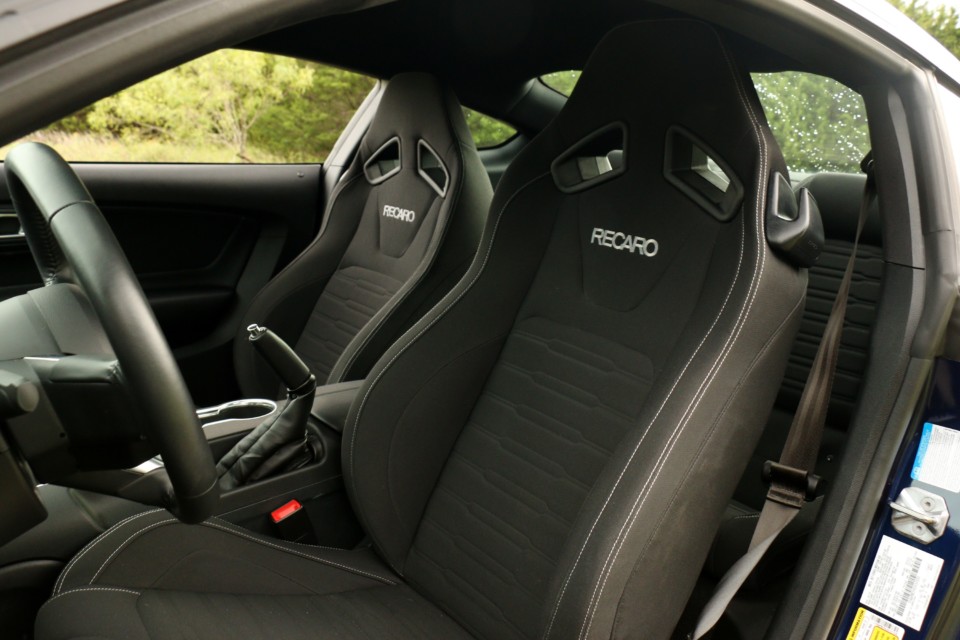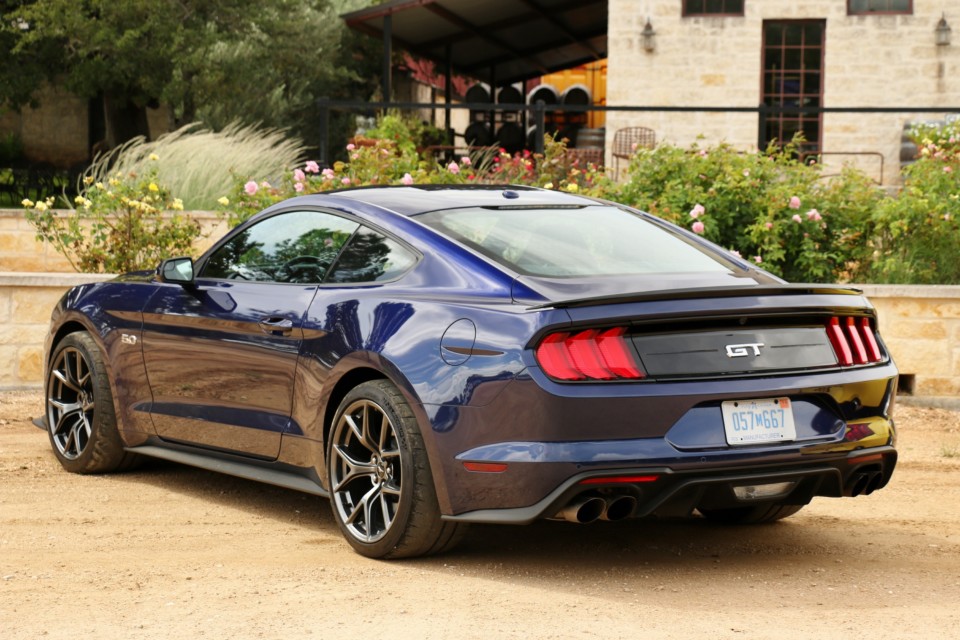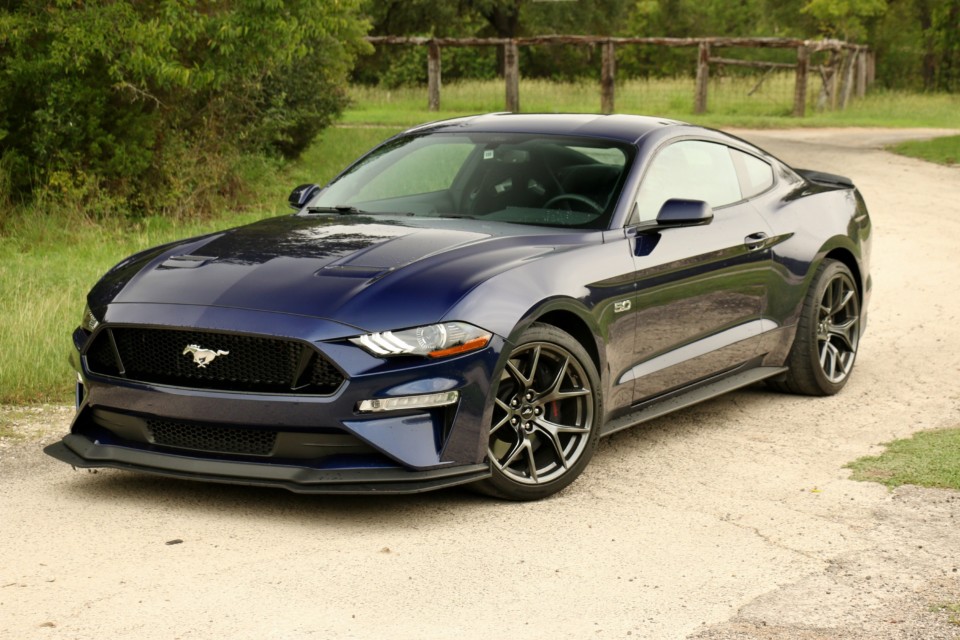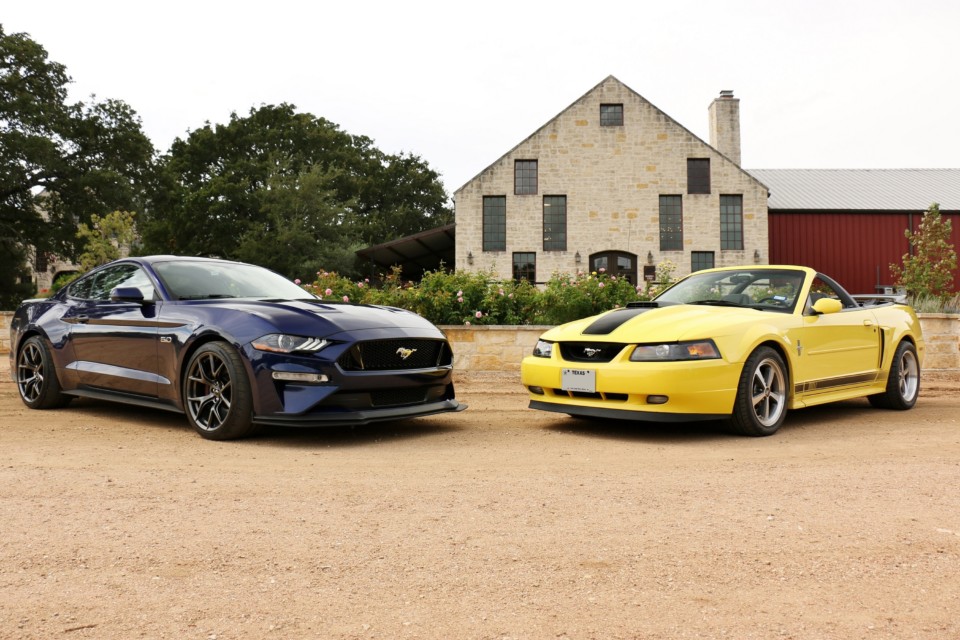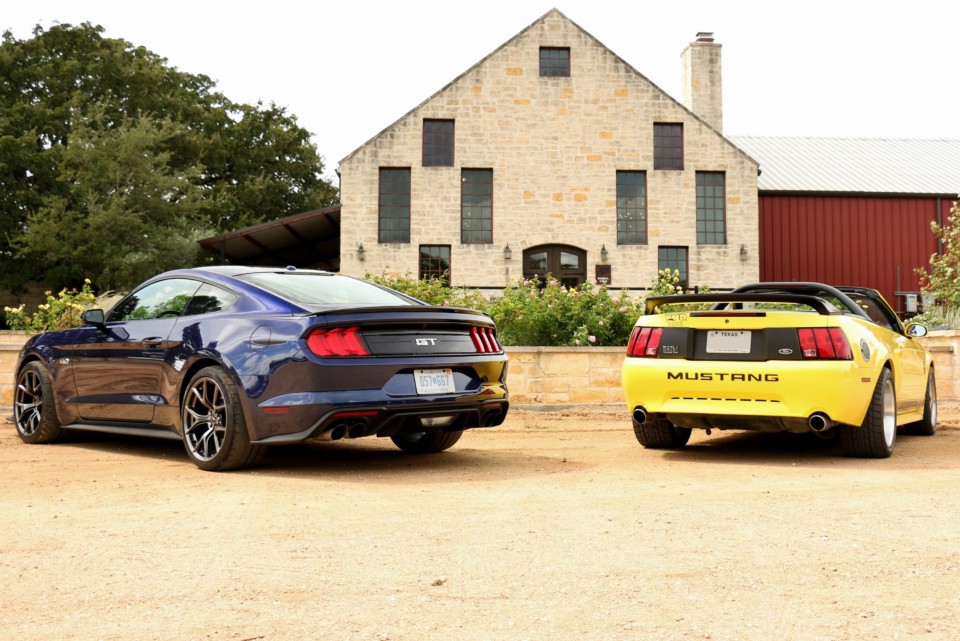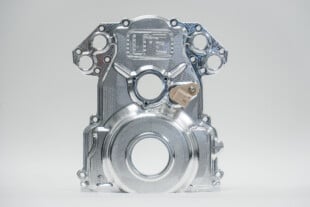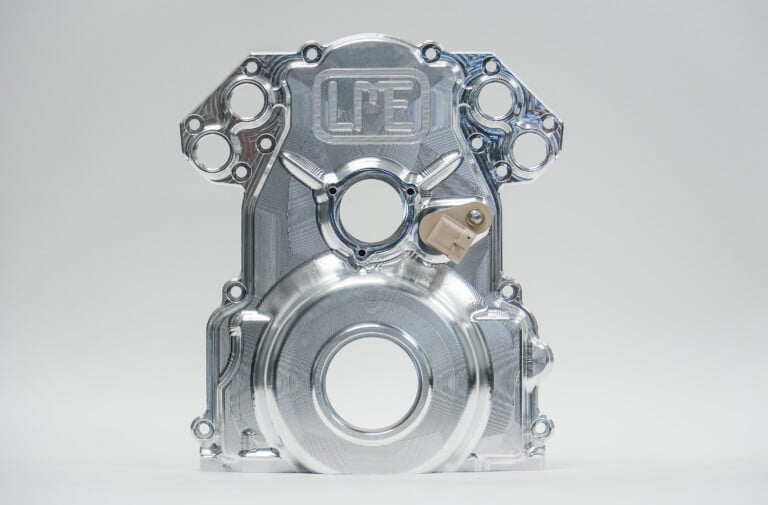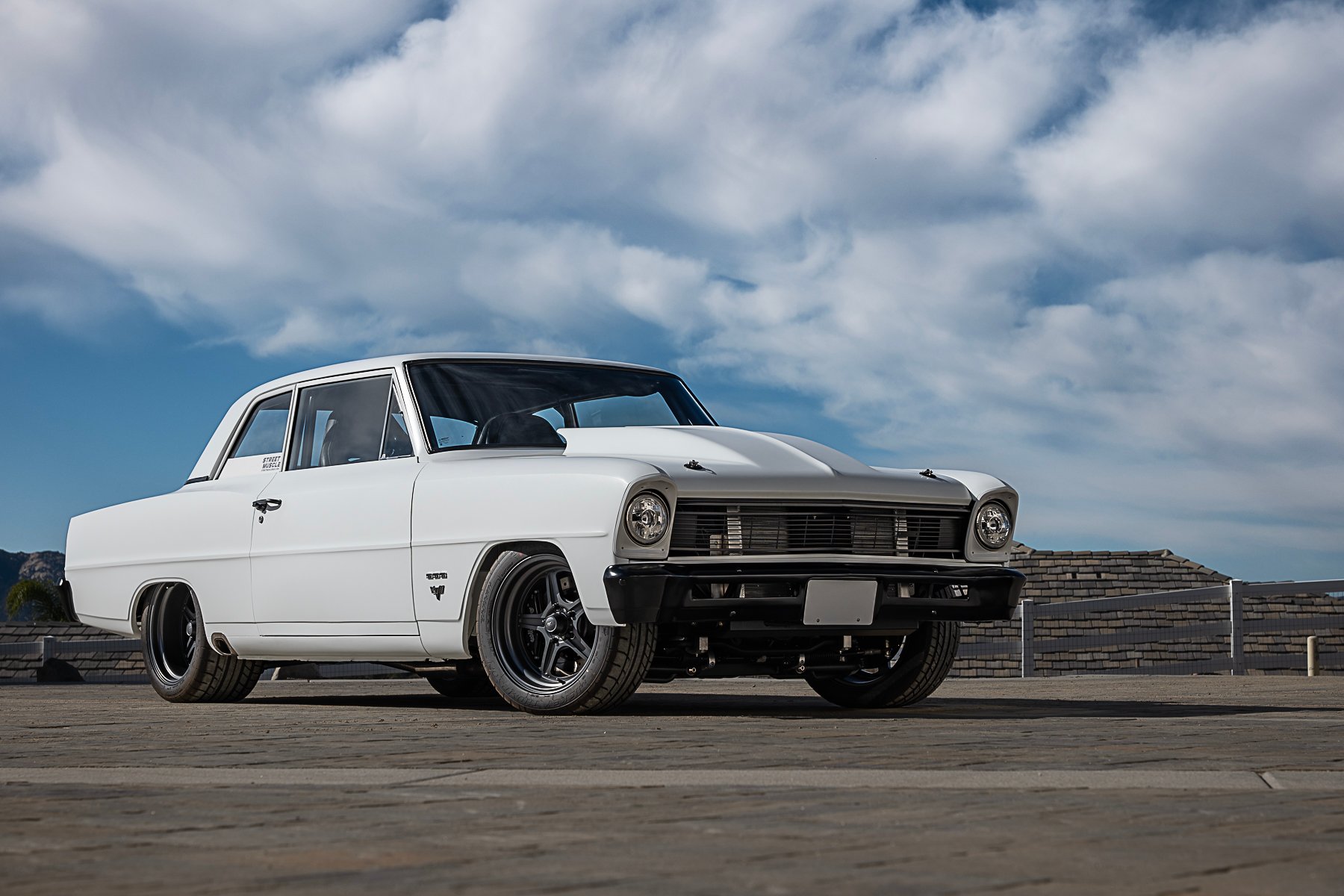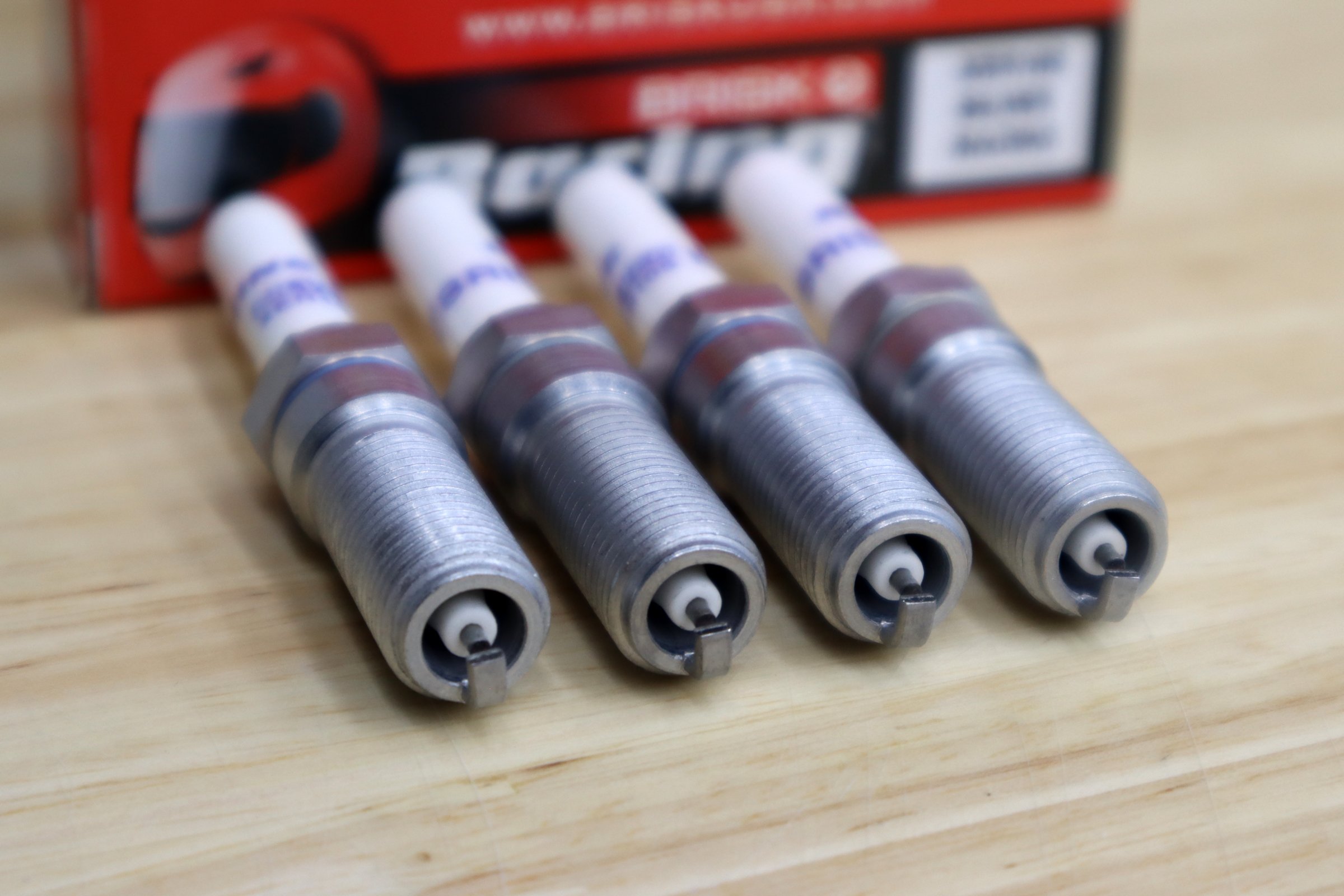There’s a variety of reasons the Ford Mustang has been in production for more than 50 years. You can say it’s because the original model had several desirable features and a price most Americans could afford. Or because Ford has continued to improve its performance throughout six generations. You might point to economic factors and demographic trends to explain its longevity.
I’ve thought of another reason. It’s simple, but it explains it all: passion. I know, I know – that word is used more in automotive writing than horsepower. But it’s how this all works and why the 2018 and 2003 Mustangs you see here exist. We’re not talking about a commuter econobox here. Nobody buys a Mustang because it scored well in crash tests. Things such as trunk space and lumbar support are not deal-breakers in the purchase process. Passion is what gets people to sign on the dotted line. Someone sees a Mustang, and they want it. It’s all heart, no head. They catch a glimpse of its muscular lines, hear the roar of its exhaust, and that’s all they need to know. They don’t wonder to themselves, How clear is the resolution of the rearview camera? Have the seats been treated to resist coffee stains? The only time math and logic pop into their head is when they try to figure out if they can afford the monthly payments.
Passion is what has kept the Mustang going all these years. It was around when the Dodge Challenger hit the market in the early 1970s and still going when the Mopar muscle car left it a few years later. When the Challenger came back for 2008, it arrived on the scene a few years into the S197 generation of the Mustang. It was the same way with the Mustang’s biggest rival, the Chevrolet Camaro. The blue oval beast stayed in dealerships and the minds of car enthusiasts when the Chevy was out of production between 2002 and 2010. Now, in an age in which manufacturers are abandoning traditional cars and shifting money and manufacturing capacity toward trucks and SUVs, America’s love of the Mustang is keeping it from meeting the fate of its sedan cousins.
Every now and then, a refresh is necessary to keep the torch people carry for the Mustang burning brightly. Ford extensively modified it inside and out for the 2018 model year. Designers reshaped the front fenders and tweaked the shape of the grille. They redesigned the headlights and fog lamps and restyled the lower front fascia, which looks more aggressive than before. At the rear, they gave the tri-bar taillights a C-like shape and added quad exhaust finishers that sound even better than they look. The cockpit features updated upholstery, a new dashboard, and an engine start button that pulses 30 times a minute – just like a pony’s heart at rest – before you fire up the more powerful 5.0-liter V8.
Thanks to several improvements, including the addition of port fuel injection, a new crankshaft and heads, the 2018 version of the Coyote produces 460 horsepower and 420 lb-ft of torque. That’s connected to either a new 10-speed automatic or a revised six-speed manual with a new dual-mass flywheel, twin-disc clutch, and larger synchronizers for the first four gears.
Some people find that turning what inspires and excites them into a job dulls their enthusiasm for it. Knowing you have to do something isn’t nearly as enjoyable as choosing to do it whenever you want to. That wasn’t the case with the engineers who created the Performance Pack Level 2, which Ford added to my Kona Blue 2018 Mustang GT media loaner. They punch in every day and spend hours in meetings discussing all aspects of the Mustang, but there’s no quitting time when it comes to their interest in it.
In a press release about the suite of performance upgrades, Tom Barnes, Mustang vehicle engineering manager, said, “A passion for creating something special is what really drove this project. And that really showed in the off-the-clock way we went about doing our work.”
After regular office hours, Barnes and other engineers tinkered and toiled to come up with ways of making the Mustang GT a faster horse. The GT Performance Package, which I tested earlier this year, served as the starting point. Like that, the Level 2 package includes special chassis, ABS, steering, and stability control tuning. Both bundles have larger rotors and six-piston Brembo brake calipers up front, a k-brace, a larger radiator, a strut tower brace, and a Torsen diff with 3.73 gearing.
From there, Barnes and his crew went about sharpening the Mustang GT’s aerodynamics, steering, braking, and handling. Compared to the Level 1 package, Level 2 has a 12-percent stiffer front stabilizer bar, a 67-percent stiffer rear stabilizer bar, 20-percent stiffer front springs, and 13-percent stiffer rear springs. Quicker electric power-assisted steering and MagneRide dampers are standard equipment.
Jonathan Gesek, a former aero specialist at NASA, was in charge of optimizing the Mustang’s bodywork. He used the splitter on the Boss 302 Laguna Seca as a benchmark for the Level 2 package’s front lip. What he created justifies its exaggerated form (it juts out three inches from the front bumper’s corners) with function by generating approximately 24 pounds of downforce at 80 mph. The slim rear spoiler does its job with more subtlety.
To help the Mustang steer and handle with more precision, tire and wheel engineer Chauncy Eggleston developed a set of Dark Tarnish aluminum wheels that measure 1.5 inches wider than the wheels in the Level 1 package: 19” X 10.5” in the front and 19” X 11” in the back. Those are wrapped in what I would consider Level 2’s most distinctive – and exasperating – characteristic: 305/30/ZR19 Michelin Pilot Sport Cup 2 summer tires – the same rubber that connects the Mercedes-Benz SLS AMG Black Series and Ferrari 458 Speciale to the road. Not only do they give the Mustang GT a wider footprint, but they also help bring it more than a half-inch closer to the road.
The car Ford sent me to test for a week was a plain and focused machine. No Premium package. It was just a base Mustang GT with the $6,500 Level 2 package and a few options, which brought its final price to $45,390. The $2,000 301A Equipment Group added features such as dual-zone climate control, selectable drive modes, a nine-speaker audio system, and the SYNC 3 infotainment setup. I didn’t bemoan the lack of navigation or heated and cooled front seats. I had the most high-performance modern Mustang short of the Shelby GT350, form-fitting cloth Recaro bucket seats ($1,595), and the multi-mode Active Valve Performance Exhaust system ($895).
Given the fact that I took the Level 1 car out to my local track for some test laps several months ago, I wanted to do something different with the more focused model. Weeks before I was scheduled to be in the Level 2 car, I reached out to my friend Wayne, who owns a 2003 New Edge Mustang convertible powered by the 4.6-liter V8 from a 2003 Mach 1. He was going to try to get his buddy Armando to meet us in his Grabber Orange S197 California Special, but it was highly likely that that was not going to happen.
I received the ’18 Mustang GT on a Wednesday. Wayne and Armando and I were supposed to meet up near San Antonio, Texas and go for a quick and loud run through the hill country on Sunday. Until then, I drove my press loaner around Austin and the outlying areas. I was already familiar with its basic powertrain. The juiced-up V8 loved to be revved and rewarded me for using a heavy right foot with a perfectly tuned roar, even if I had the active exhaust set to Normal. In Sport S+ mode, the 5.0 expressed its rage with more clarity, making the smile on my face grow wider.
Just as I had feared, Armando was not going to be joining Wayne and I for our drive. Instead, Wayne’s wife Natalie, our friend Chris, and his wife Paloma would come along. The journey from my apartment outside of the Austin city limits to Wayne’s house in Spring Branch revealed the most significant difference between the Mustang GT with the Level 2 package and…any other Mustang I’ve ever driven. On paper, the PS Cup 2s grip the road with supercar strength. On pavement, they’re an absolute handful. If I drove over a surface that was anything other than glass-smooth, I could count on them changing the direction the front end went multiple times. They were complete slaves to the power of suggestion, which often came in the form of a winding strip of road tar or a thick glob of excess tarmac.
I’ve always loved manual cars, partly because they make you a better driver because you have to look further up the road than you would in an automatic car and plan your footwork accordingly. The Level 2 package made me even more vigilant because I also had to pick my line on the road and keep my hands ready. The front tires would grab at the slightest groove and jerk the steering wheel. Going over poorly maintained backroads was like driving a Jeep over a rough trail: I kept my thumbs outside of the steering wheel’s spokes to keep them safe.
It was even worse once Chris was in the car with me and we were following Wayne and the gals out to Becker Vineyards for a photoshoot. A heavy drizzle made the rural roads slick and the PS Cup 2s even more squirrelly. The tires were at the mercy of the bumps and imperfections ahead and took the steering along for the ride. I did my best to adjust. Ford claims they specially tuned and quickened the Level 2 package’s steering. Out on those slick roads, I couldn’t tell. I was receiving data through the wheel, but none of it was usable ahead of time or even in the moment. It was all information that I had to react to, as if a person shoved me and someone else told me, “Hey, somebody just shoved you.”
Once or twice, Chris and I passed over a stretch of road that left the tires alone. In those brief moments, I could feel the car gliding over the surface, feeling it, reading it. I wanted those seconds of clarity to be minutes, hours. If they could’ve been, I knew I could’ve experienced the full results of what Ford’s engineers had created. As things were, I found the PS Cup 2s too manic for public roads. I’m sure they would’ve been a revelation on a smooth track, though.
However, I don’t regret skipping the drive out to my local race course. It would’ve been just as wet there. Plus, meeting up with Wayne made something clear to me. My fastback test car and Wayne’s drop-top are from two completely different generations but united by love for an automotive icon.
Barnes and his fellow performance wizards worked extra hours to create a hotter set of upgrades for the S550. Wayne, a lifelong Mustang fan and three-time Mustang owner, spent years turning a horrible accident into an impressive and unique accomplishment.
While Wayne and Natalie were returning from vacation in 2013, a careless driver plowed into the back of their 2003 Mach 1. Wayne was devastated because his dream car got totaled, but he and Natalie were able to walk away from the crash, which left the Mach 1 a mangled heap of twisted metal and busted glass. He could’ve just used the check from his insurance company to offset the costs of another car and been done. Wayne’s love of the Mach 1’s 32-valve V8 and Shaker hood scoop was too strong, though. He bought a 2003 Mustang V6 convertible, gutted it, stuffed his Mach 1’s engine and four-speed automatic inside, upgraded a variety of suspension and underbody components, and installed a new interior and wheels. His one-of-a-kind Mustang is appropriately named “Machenstein.”
Creating it required research, patience, and late nights. Perhaps more than anything, it took passion. Wayne has plenty to give. So do his fellow Mustang owners. The same goes for Ford’s designers and engineers. That passion has made the Mustang more powerful and athletic over the past several decades and led to innovations such as the Performance Pack Level 2. And that passion is what’s going to ensure that this latest generation of the Mustang isn’t the last.


